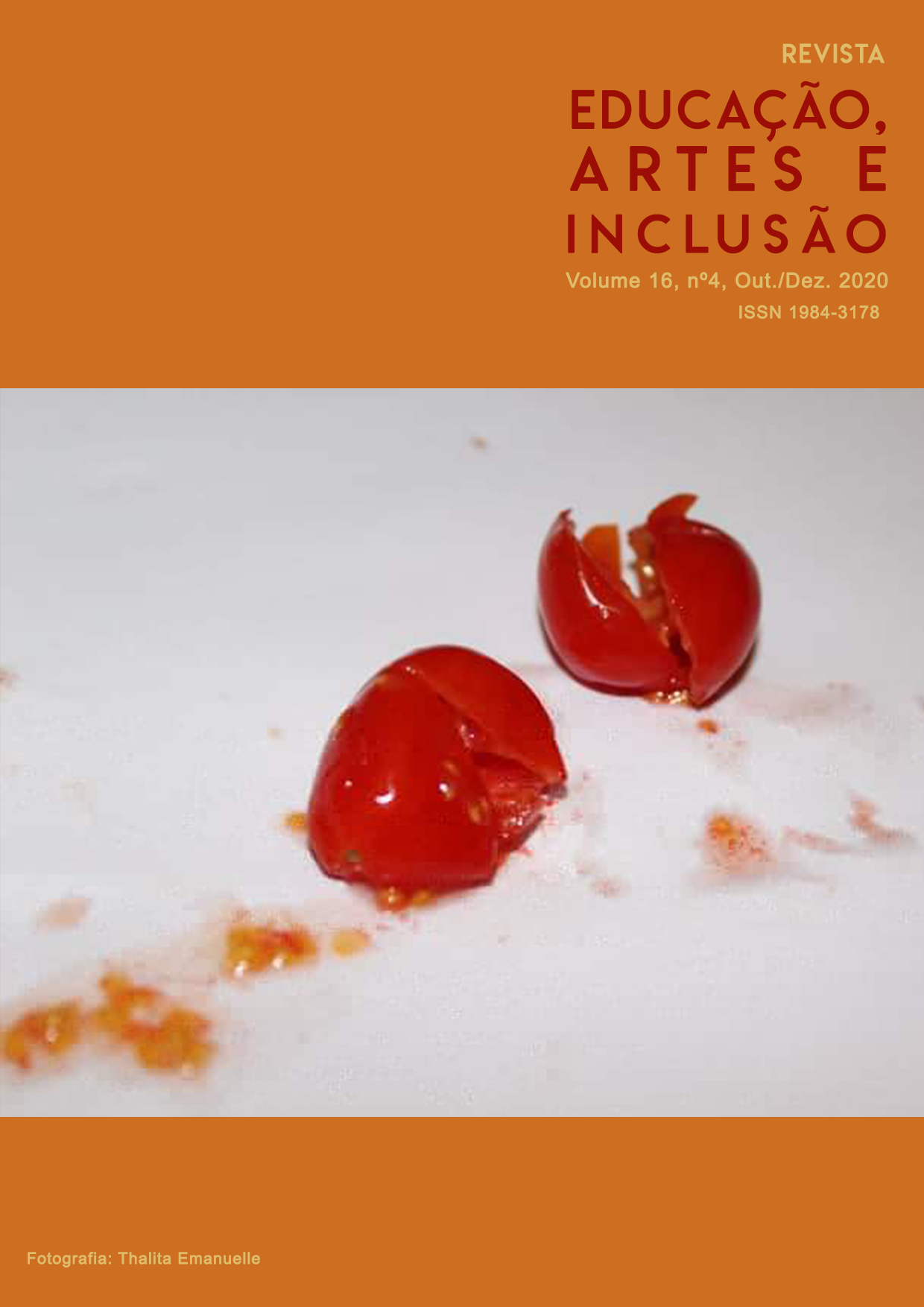Deconstruction of compulsory bipedal in dance
DOI:
https://doi.org/10.5965/19843178164202059Keywords:
Corpomídia, Dança, Bipedia CompusóriaAbstract
The presence of any kind can trigger a series events to the body. The body as corpomedia, that is, media of its state, of each moment of its state, the poetic discourses that emerge there are understood as historically produced and corresponds to the experiences that constitute the body. Considering this, the investigation of the construction of the dance in multiple bodies, the propriety of the body as a living, cognitive and self-organizing process becomes evident. However, when it comes to the disable body dances, the kickback about that body. The sovereignty of bipedal thinking that excludes these people as unfit and unproductive, regardless of any advance in the field of dance, is evident. The dance in this context, is a clipping (micro space) that reveals, in itself, all social behavior (macro space). We understand that this field of knowledge construction that is dance will collaborate in intersectionality whit other areas, based on how it establishes and understands body relations. Considering Dance and body that dances as a clipping o four social structure, it is possible to perceive discourses of hegemonic thinking that maintain exclusive functional and body patterns in relation to people with disabilities.
Downloads
References
AGAMBEN, Giorgio. Homo Sacer, o poder soberano e a vida nua. Belo Horizonte: UFMG, 1999.
BAUMAN, Zygmunt. Modernidade Líquida. Rio de Janeiro: Jorge Zahar, 1999.
CARMO, Carlos E. O. Desnudando um corpo perturbador: a “bipedia compulsória” e o fetiche pela deficiência na Dança. Revista Tabuleiro de Letras (PPGEL/UNEB), Salvador, v. 13, n. 2, p. 75-89, 2019.
CASTRO, Fátima C.D. CorpoSitiado..., A comunicação invisível. Dança, Rodas e Poéticas. Tese (Doutorado em Comunicação e Semiótica) - Pontifícia Universidade de São Paulo, São Paulo, 2007.
CHURCHLAND, Paul M. Matéria e Consciência. São Paulo: Unesp. 2004.
DAMÁSIO, Antonio. O Mistério da Consciência. São Paulo: Companhia das Letras, 1999.
DEWEY, John. Arte como Experiência. São Paulo: Martins Fontes, 2012.
GREINER, Christine; KATZ, Helena. Arte e cognição. Corpomídia, Comunicação,
Política. São Paulo: Annablume, 20015.
HERNANDEZ, Fernando. Educación y Cultura Visual. Barcelona: Octaedro, 2010.
KATZ, Helena. UM, DOIS, TRÊS. A dança é o pensamento do corpo. Belo Horizonte: FID, 2005.
LLINÁS, Rodolfo. El Cérebro y el mito del Yo. Bogotá: Germiis, 2003.
LOBO, Lilia Ferreira. Os infames da história: pobres, escravos e deficientes no Brasil Rio de Janeiro: Lamparina, 2008.
LOUPPE, Laurence. Poética da dança contemporânea. Lisboa: Orfeu Negro, 2012.
MCRUER, Robert. Crip Theory: Cultural Signs of Queerness and Disability. New York: New York University Press, 2006.
MIGNOLO, Walter D. Desobediência epistêmica: a opção descolonizar e o significado de identidade em política. Cadernos de Letras da UFF: Dossiê: Literatura, língua e identidade, Niterói, n. 34, p. 287-324, 2008.
NOË , Alva. Action in Perception. Massachusetts: Massachusetts Institute of Technology, 2004.
SENNETT, Richard. Juntos. Os rituais, os prazeres e a política da cooperação. Rio de Janeiro: Record, 2012.
SILVA, Tomaz Tadeu. Identidade e diferença: a perspectiva dos estudos culturais (org.). Stuart Hall, Katrhyn Woodward, 15 ed. Petrópolis, RJ: Vozes, 2014.
VIEIRA, Jorge Albuquerque. Ciência-formas de conhecimento: arte e ciência – uma visão a partir da complexidade. Fortaleza: Expressão, 2006
ZOBOLI, F.; BARRETO, S. J. A Corporeidade como fator de inclusão de alunos com necessidades especiais nas aulas de Educação física. In: RODRIGUES, D. Atividade motora adaptada: a alegria do corpo. São Paulo: Artes Médicas, 2006.
Downloads
Published
How to Cite
Issue
Section
License
Copyright (c) 2020 Carlos Eduardo Oliveira do Carmo, Fatima Campos Daltro de Castro

This work is licensed under a Creative Commons Attribution-NonCommercial 4.0 International License.
Copyright Statement
The Educação, Artes e Inclusão is a journal that follows the Free Access Policy. The articles published by the journal are free of charge, intended for educational and non-commercial applications. The articles whose authors are identified represent the expression from the point of view of their authors and not the official position of the Educação, Artes e Inclusão Journal or the Educação, Artes e Inclusão Research Group.
Authors who publish in this journal agree to the following terms:
(A) Authors retain the copyright and grant the journal the right of first publication, with the work simultaneously licensed under the Creative Commons Attribution License which allows the sharing of the work with acknowledgment of authorship and initial publication in this magazine.
(B) Authors are authorized to take additional contracts separately, for non-exclusive distribution of the version of the work published in this journal (eg publish in institutional repository or as a book chapter), with acknowledgment of authorship and initial publication in this magazine.
(C) This journal provides public access to all of its content, as this allows for greater visibility and scope of published articles and reviews. For more information on this approach, visit the Public Knowledge Project.
This journal is licensed under a Creative Commons Attribution-NonCommercial-ShareAlike 4.0 International License. This license allows others to remix, adapt and create from your work for non-commercial purposes, and although new work must give you due credit and cannot be used for business purposes, users do not have to license such derivative works under the same terms.



